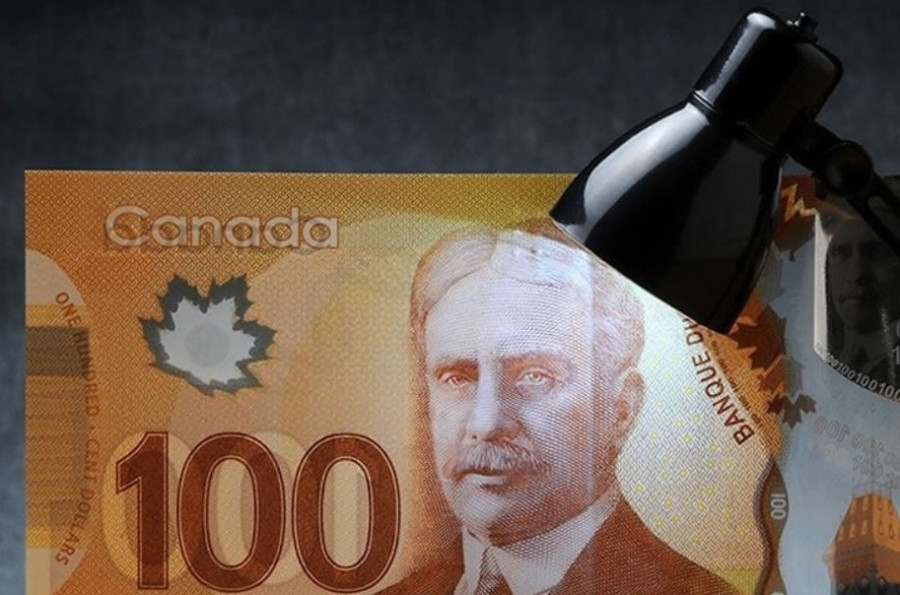
According to the latest data from the Bank of Canada, after the September meeting, the interest rate remained unchanged at 5.0%. This decision fully aligned with market expectations, so traders demonstrated only a formal reaction: the USD/CAD pair rose to 1.3675 but then lost all its intraday gains. In essence, the price completed a circle and returned to the "zero point," with the pair finishing the trading day almost at the opening level.

Looking at the weekly chart of USD/CAD, we can see that the loonie has been showing an upward trend since the end of July. Part of this is due to the weakening of the Canadian dollar, but primarily due to the strengthening of the greenback. Among the main reasons is the divergence in positions between the Federal Reserve System and the Bank of Canada. While the Fed is preparing to raise interest rates again at one of its upcoming meetings, the Canadian regulator is adopting a more cautious stance (although it does not rule out further tightening of monetary policy within the current year). In August, the situation developed further after the latest inflation data in the United States was published.
Despite the slowdown in the core consumer price index (CPI), the overall CPI unexpectedly began to gain momentum after several months of consecutive decline. In addition, the producer price index (PPI), both overall and core, entered the "green zone" after 11 months of consecutive decline, as did the import price index. The icing on the cake was the core personal consumption expenditures (PCE) index—one of the key inflation indicators tracked by the Fed. After two months of decline, the indicator accelerated again, thereby adding to the corresponding fundamental picture.
The Fed's response did not take long to follow. Speaking at the Jackson Hole Economic Symposium, the head of the U.S. central bank, Jerome Powell, stated that the regulator might need further interest rate hikes "to cool down still excessively high inflation." He pointed to the dynamics of both the overall CPI and PPI, while predicting an increase in the core PCE index in July (a forecast that subsequently proved correct). At the same time, Powell noted that the central bank would have to act carefully, weighing all the "pros" and "cons" when making a rate decision. This remark created some uncertainty, at least in the context of the September meeting. Simultaneously, traders are placing certain hopes on the November meeting, and these hopes are gradually growing.
According to the CME FedWatch Tool, the probability of a rate hike at the September meeting is currently only 7%. Meanwhile, the probability of a tightening in November is nearly 50%. These figures eloquently reflect market sentiment. The balance will shift one way or another based on the results of the September releases.
If inflation indicators in August follow the "July trajectory," the chances of a rate hike in November will soar to 70-80%. In this context, it's worth noting that the recent macroeconomic reports from the United States allow the Federal Reserve to consider the possibility of further monetary policy tightening. For example, the Institute for Supply Management (ISM) published the business activity index in the services sector yesterday, which stood at 54.5 (against a forecast of an increase to 52 points)—the best result since February this year. The previously published ISM manufacturing index also entered the green zone, rising to 47.6 (the best result since February).
On the other hand, the Bank of Canada is not in a hurry to announce an interest rate hike, although it does not rule out such a possibility. The statements from the Canadian central bank are more cautious in nature. The regulator mentioned that in the near term, inflation could show an upward trend again due to recent increases in gasoline prices. However, the Bank of Canada expects that the consumer price index will then decrease again, roughly by the end of this year. The Bank of Canada also noted that the decision to keep rates at the five percent level was made "considering recent evidence of weakening excess demand in the economy and the lagged effects of monetary policy."
In other words, the more aggressive stance of the Fed and the more passive position of the Canadian regulator are favoring USD/CAD buyers. Thanks to a combination of these factors, the pair has moved up more than 500 pips since late July, without exhausting the potential for further growth.
Technical analysis also supports long positions. On the daily and weekly charts, the pair is situated between the middle and upper Bollinger Bands lines, as well as above all the lines of the Ichimoku indicator, which has formed a bullish "Parade of Lines" signal on the daily timeframe. This suggests a preference for long positions on downward price pullbacks. The primary target for the upward movement in the medium term is the 1.3710 mark—the upper Bollinger Bands line on the W1 timeframe.